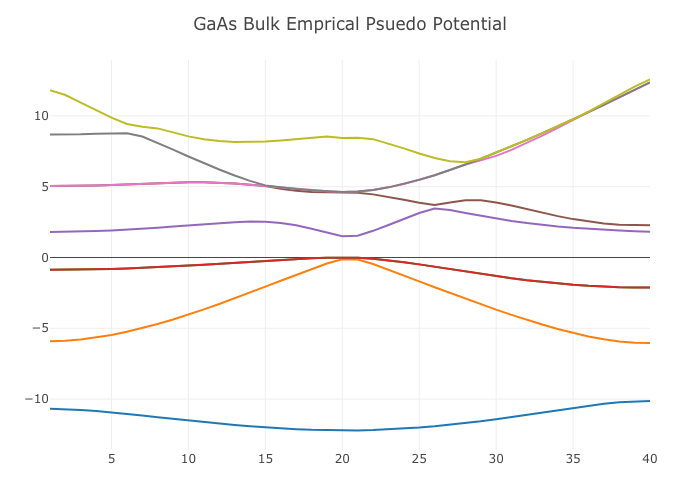This repo aims to calculate band structure for semiconductor by using empirical pseudo potential
using Pkg
Pkg.add(https://github.com/funabashi800/EmpiricalPseudopotential.jl.git)
using EmpiricalPseudopotential
const p = EmpiricalPseudopotential# Define material
InSb = p.Material("InSb", "fcc")
# Calculate pseudo potential
E = p.EigenEnergy(InSb)
# Plot band structure
p.BandStructure(E, fielname="InSb")
# Calculate band gap
p.BandGap(E# Define material
InSb = p.Material("InSb", "fcc")
# calculate strained lattice constant
# e.g. strain(Material, percent=0.1%) or strain(Material, by=6.379e-10)
p.strain(InSb, percent=0.5)
# Calculate pseudo potential
band = p.EigenEnergy(InSb, 500)
# Plot band structure
p.BandPlot(band, title="InSb")
# Calculate band gap
gap = p.BandGap(band)
# Calculate Effective Mass
mass = p.EffectiveMass(band, 200, 300)# Define materials
InSb = p.Material("InSb", "fcc")
GaSb = p.Material("GaSb", "fcc")
# Generate ternary material from above two materials with each alloy
InGaSb = p.mix("InGaSb", InSb, 0.4, GaSb, 0.6)
# Calculate pseudo potential
E = p.EigenEnergy(InGaSb)
# Plot band structure
p.BandPlot(E, title="InGaSb")
# Calculate band gap
p.BandGap(E)I. Vurgaftman, J.R. Meyer and L.R. Ram-Mohan, J. Appl. Phys.,89, 5815(2001).
